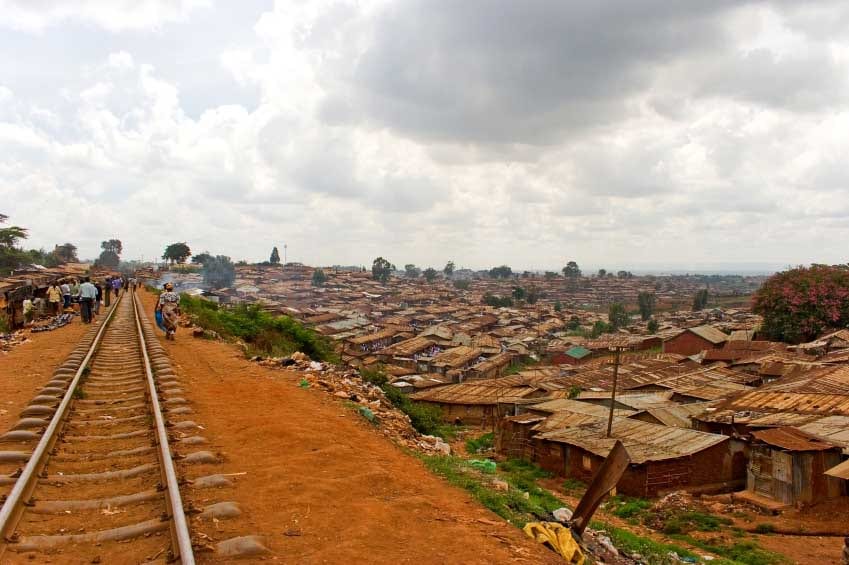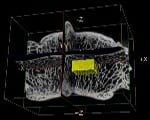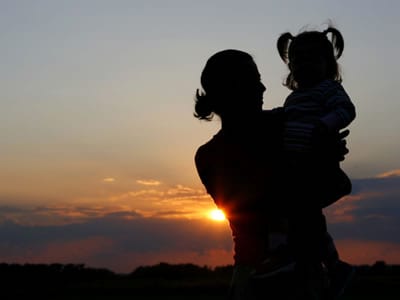 For hundreds of years the beauty and mystery of Taos, New Mexico, have lured thousands of settlers and visitors, from the ancestors of the Taos and Picuris Indians and Spanish settlers to skiing enthusiasts and artists.
For hundreds of years the beauty and mystery of Taos, New Mexico, have lured thousands of settlers and visitors, from the ancestors of the Taos and Picuris Indians and Spanish settlers to skiing enthusiasts and artists.
Now students participating in SMU’s Archaeology Field School have answered the call of Taos in their own way. In summer 2007 they began work on the first phase of a research project that will bring together University faculty and students, Taos community leaders, private landowners, and local, state and federal government agencies.
 |
| Sunday Eiselt |
The multifaceted undertaking will involve surveying on foot and through satellite and Google Earth images, as well as archival research and excavation. The collaboration marks the first time archaeological exploration has been conducted on the Ranchos de Taos Plaza.
The project was made possible because the Field School, part of SMU’s Department of Anthropology in Dedman College, has established trust in this traditional community that in the past has regarded such efforts with suspicion.
“Modern archaeology involves a lot of soft skills, including cultural sensitivity and the ability to interact respectfully with communities,” says Sunday Eiselt, visiting assistant professor of anthropology and acting director of SMU’s Archaeology Field School. “You can’t just go in, put holes in the ground and leave.”
The Field School’s first project in the Plaza began last year as a volunteer effort. Taos native Lupita Tafoya’s adobe house has been in her family for 11 generations, and the original structure dates to about 1800. Field School students offered their labor to lower Tafoya’s packed-earth floor to create a step-down living room area. In the process they found a midden, or kitchen garbage area, dating from the early 1800s.
Digging the midden
The SMU students’ 2007 project focused on investigating the midden, as well as deposits in Tafoya’s dining room and front yard.
A total of 14 SMU students, 12 undergraduates and two graduate assistants, joined forces this year with two new high school graduates from Taos Pueblo.
 |
| Pipad Krajaejun, Silpakorn U., Bangkok, and Allison McCabe, Taos Pueblo, excavate in Tafoya’s house. |
They participated with the help of scholarships from a fund established by former Texas Governor Bill Clements and his wife, former Texas First Lady Rita Clements.
“It’s a big house with several later additions, so the students will recreate the construction history of the house as well,” Eiselt says.
At one time, archaeological exploration of historic cities was confined largely to abandoned areas that provided space for open-area excavation. That changed after World War II, when bomb craters left areas of large, old cities such as London and Warsaw open for investigation.
Researchers developed new techniques to cope with the logistical difficulties of doing archaeological digs in places where people lived and worked. As historical archaeology evolved, new skills were needed to address the often-divergent needs of individual communities.
Taos is an especially complex challenge, says Eiselt, who received her Ph.D. in anthropology from the University of Michigan-Ann Arbor and has been conducting archaeological research in Northern New Mexico since 1998.
A remote and historically close-knit community, the area has experienced a rapid influx of outside investment in recent years, from tourists drawn to its natural beauty and culture to investors seeking to capitalize on them. About 180,000 visitors a year converge on the town, which has a permanent population of just over 5,000. Tourism accounts for nearly 85 percent of an economy that also consistently maintains a double-digit unemployment rate and a cost of living nearly 14 percent higher than the U.S. average, according to the Taos Economic Report and other indicators.
 |
| Mike Sandoval, Taos Pueblo |
Impact of modernization
The tension between tradition and modernization in the community of Taos, between preservation and gentrification, is palpable, Eiselt says.
“Many former households just off the Ranchos de Taos Plaza are in ruins,” she says. “And with Plaza lots going for $400,000 each, the property taxes have created a situation in which residents whose families have lived there for generations cannot afford to do so now.”
The collaboration between the SMU Field School and the Taos community is creating an oasis of cooperation in the midst of this upheaval, Eiselt adds.
“It’s also a model of how to accomplish goals that serve the people and their interests, as well as our scientific and educational objectives,” she says.
As part of that model, each Archaeology Field School project begins with a volunteer component and follows the example set at Tafoya’s home. This year, the Field School students also helped with the annual cleaning and re-mudding (enjara) of the much-photographed San Francisco de Asis church, an adobe landmark whose earliest construction dates to 1772.
The Taos Plaza community is setting guidelines and providing context for the archaeologists’ work, Eiselt says.
“Many of the people who live here are accomplished scholars of the area’s history in their own right,” she says. “Interacting with them is another great learning opportunity.”
| Leslie Reeder, SMU Ph.D. candidate, making pottery in La Madera, 2007. |
Students measure the layers of flooring in Tafoya’s dining room to reconstruct the history of the house.
For example, it was Lupita Tafoya who told Eiselt that the social universe of Taos Plaza was too small for the proposed study, Eiselt says.
“She let us know that we needed to explore not only the Plaza, but all of San Francisco de Asis parish. So much of the community’s activity centers on that church; if we want to understand what we find, we need to understand that larger context,” she says.
As a result of that conversation, Eiselt has created a multiyear research plan. The plan’s three components, the oral history, archival work and general archaeology, will be carried out in consultation with the U.S. Bureau of Land Management, the U.S. Forest Service, the University of New Mexico’s Maxwell Museum of Anthropology, the Taos Archaeological Society and residents and archaeologists from the area.
One of the study’s major features is its emphasis on mapping rather than digging.
“Excavation, which is intrusive and destructive, will be avoided as much as possible, with most activities focusing on non-intrusive pedestrian or surface survey, including remote sensing, aerial photography and historic maps,” Eiselt wrote in her introduction to the research plan.
The study’s other highlight, a focus on community interaction, also helps the Archaeology Field School achieve one of its primary educational goals: to teach how to work as partners in places like Taos.
“We’re teaching students not to go in with an attitude of ‘Here’s your past. We know because we’re scientists,'” Eiselt says. “This work is about the people, not the objects.” — Kathleen Tibbetts
Related links:
Sunday Eiselt and her research
Sunday Eiselt brief bio
SMU Archaeology Field School
SMU-in-Taos
SMU Department of Anthropology
Dedman College of Humanities and Sciences
 His years of research on creatures ranging from goats to antelopes to kangaroos indicate that smaller animals expend much more energy per pound to locomote. For example, a mouse expends 30 times more energy than an elephant in proportion to their weights, while human children use about twice as much energy as their parents to cover the same distance, he says.
His years of research on creatures ranging from goats to antelopes to kangaroos indicate that smaller animals expend much more energy per pound to locomote. For example, a mouse expends 30 times more energy than an elephant in proportion to their weights, while human children use about twice as much energy as their parents to cover the same distance, he says. Southern Methodist University psychology professor
Southern Methodist University psychology professor  New research by a U.S.-U.K. team that included SMU archaeology student
New research by a U.S.-U.K. team that included SMU archaeology student 














